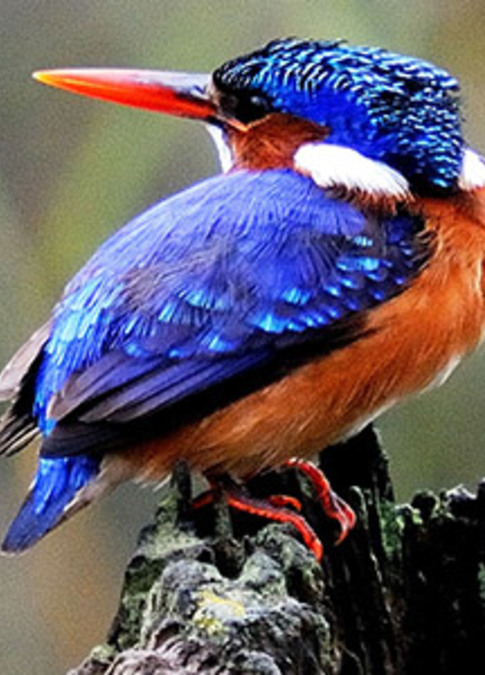Bees
In Europe and North America, ecologists, apiarists and others are concerned about the future of the honey bee, swarms of which have been declining. The loss of these pollinators is a potentially serious problem for fruit and vegetable farmers, and ultimately for everyone. Fortunately there is no sign of a similar decline in the African bee population.
The Cape honey bee – Apis mellifera – has acquired a fearsome reputation in Europe and America where it is referred to as the “African killer bee,” and where it may, in due course, supplant the indigenous bees. In its home country it is generally treated with respect, but is regarded with less concern.
My father and his brother grew up on the farm Barville Park, barely ten kilometres from Kariega Park, and in their youth would sometimes go looking for bees' nests in the veld. This could be a tiresome undertaking, for Cape honey bees are not too fussy about where they build their nests. The often fruitless hunt would involve searching trees, rock crevices, old stone walls and any other likely spot, and very often they still came away empty-handed. Then one day they discovered that a tree not far from the homestead was the favourite perch of a honey-guide – Indicator indicator – a bird that has the remarkable habit of acting as a guide to bees' nests. This dark grey bird with a white ear patch and black throat is very often silent and unobtrusive, but when guiding its calls are most insistent and it shows every sign of distress if its cries are not heeded. Whenever the boys found the bird on its perch, success was all but guaranteed. They would follow the calling honey-guide until the vicinity of the nest was reached. Once there the bird would wait quietly.
Preparations for the assault on the nest were simple enough. A piece of cotton cloth was set alight, and when smouldering well, the work began. Smoke was blown into the nest to quieten the bees, and a spade was used to reach the comb. The boys counted the honey-comb obtained well worth the stings that came their way during the course of the operation. Before leaving the scene of the crime the honey-guide was well rewarded with wax and grubs, for legend has it that dire consequences befall anyone who omits this act of courtesy.
Driving from Grahamstown down to Kariega Park one passes the village of Salem, with its cricket-field beside the road. It was here that my father once had a rather different encounter with bees. During the game a batsman took a lusty swing at a ball and sent it flying over the boundary and into the surrounding bush for six runs. Two disheartened fielders set off to try and retrieve the ball, but approaching the boundary they suddenly stopped, about faced, and with yells and wildly swinging arms started running for the clubhouse, pursued by a cloud of angry bees. The ball, it seemed, had crashed into a hidden hive, much to the annoyance of the bees. In the twinkling of an eye the field emptied. Players and spectators crowded into the clubhouse and barricaded themselves against their attackers. There are cases on record of people being stung to death by bees, but fortunately on this occasion, apart from some closed eyes and swollen ears, no one was too much the worse for wear. Once all holes, cracks and other points of entry were sealed, they set about helping one another to remove the stings, and consoled themselves with tea.
“Tea, and not beer?” I asked.
“I don't remember any beer,” answered my father. “You must remember that in those days the Salemites were all staunch Methodists, and pretty well entirely teetotal. If anyone wanted to drink beer they would've had to sneak out the back of the house, and that would have entailed facing the wrath of the bees.”
Perhaps after all there is something to be said for the reputation that Cape honey bees have acquired for themselves overseas.








